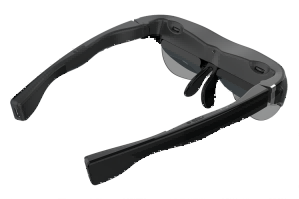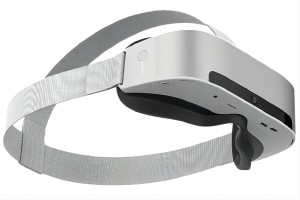Selecting the Right Smart Video Glasses
Smart video glasses, also known as head-up display glasses, are a relatively new type of wearable technology that have the potential to revolutionize the way we consume media. These glasses have become increasingly popular due to their ability to provide an immersive and interactive experience to users. The glasses use micro-displays panels and optic engines that are mounted in front of the user’s eyes to create a virtual screen that appears to be much larger than it actually is, allow users to watch movies, play games, offer a first person view (FPV) of what the camera on your drone sees and even browse the internet without the need for a traditional screen. This technology has a wide range of applications including entertainment, office, education and even medical training.
There are two main types of video glasses, based on different optic engines, which are augmented reality (AR) and virtual reality (VR).
Smart video glasses with AR optics are designed to provide users with a real-world view that is enhanced with digital information, users can see the real world around them while also overlaying digital information such as text, images, and videos. The most popular AR optic engine for smart video glasses is birdbath optics, which is designed to provide a wide field of view and can be used outdoors. Some examples of video glasses that use birdbath technology are the Xreal air, Xreal air 2, Huawei vision glass and etc.
On the other hand, smart video glasses with VR optics are designed to completely immerse users in a digital world although users cannot see the real world around them. The most popular VR optic engine for smart video glasses is pancake optics, which is designed to provide a high level of immersion and a more realistic experience. One example of vdeo glasses that use pancake technology is the Huawei VR Glass.
So, how do you find the smart video glasses you want from so many options? Here are some tips.
Field of view
When choosing smart video glasses, one of the most important factors to consider is the field of view (FOV). The FOV determines how much of the screen you can see, and a larger FOV generally provides a more immersive experience (our BB46-S068 optic engine provide a 46 degree of FOV). However, a centered FOV can also make the glasses more affordable (our BB41-S049 optic engine provide a 41 degree of FOV with better price).
Resolution and color of the screen
Another factor to consider when choosing smart video glasses is the resolution and color of the screen. A higher resolution will provide a clearer and more detailed image, while a micro-OLED screen can provide more vivid colors and higher contrast images compared to an LCD screen, VISGLASS recommend that smart video glasses for movie watching should have a resolution of at least 1920*1080 with a micro-OLED screen, all our birdbath optics support FHD(1920*1080).
Weight
It's important to consider the weight and comfort of the glasses. Look for glasses that are lightweight and well-balanced, so they won't put too much strain on your nose or ears, our lightest optic module can reach 8.1 grams for a single eye, and the eyeglasses using this module, as adopted by our customers, can achieve around 70 grams.
Additional features
Consider any additional features that the glasses may have, such as adjustable diopters which is supported by our BB41-S049 and BB46-S068, built-in high-fidelity headphones, or game support. The adjustable diopter function can allow nearsighted users to see clear images without the need for additional glasses or contact lenses. High-fidelity headphones can provide users with better listening experiences, and game support can allow glasses to easily connect to game terminals such as Switch, PlayStation, and PC. In addition, when paired with a wireless screen casting device, glasses can also be used as a wireless screen casting terminal.
We are professional manufacturers since 2016. Below is a paritial list of our smart video glasses that have already been launched.
Showing all 7 results


